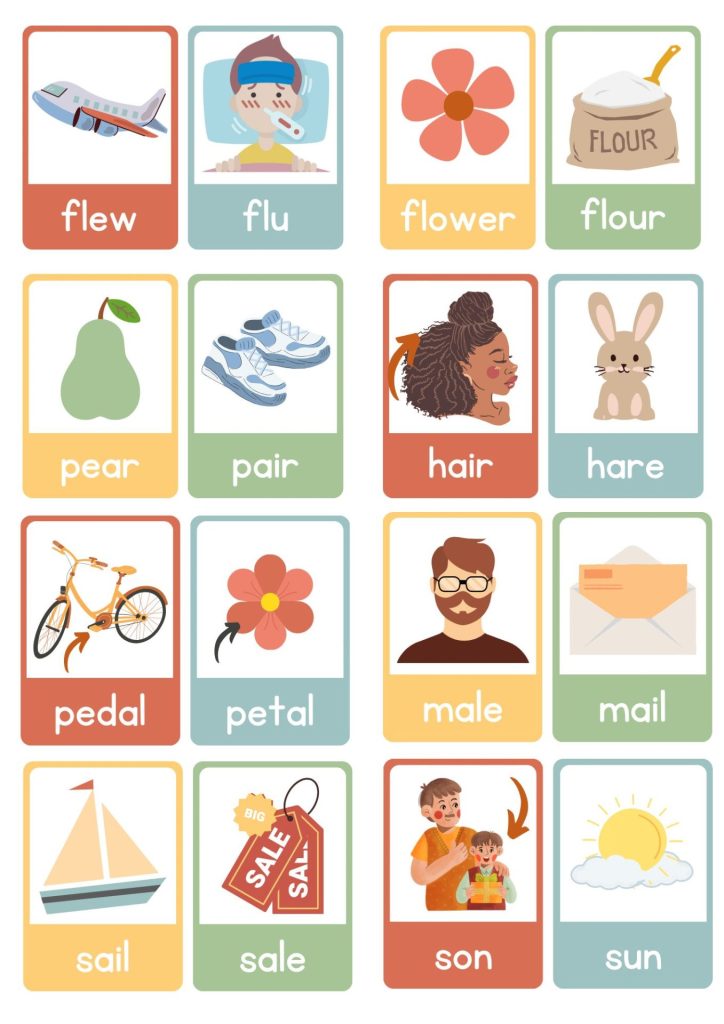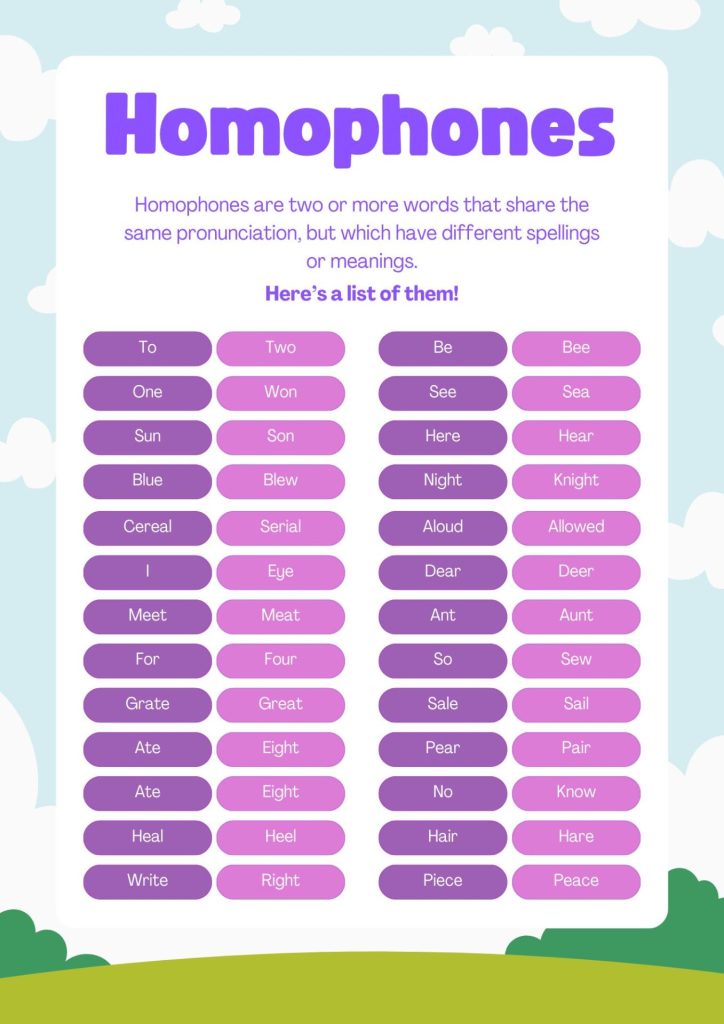Homophones: Words That Sound the Same but Mean Different Things
Table of Contents
Introduction
Homophones
Homophones are a fascinating aspect of the English language, often causing confusion due to their similar sounds and different meanings. Let’s delve into the world of homophones and explore their significance in language and communication.
Analogy of Definition
What are Homophones?
Homophones are words that share the same pronunciation but have different meanings and, in most cases, different spellings. This unique linguistic phenomenon adds complexity to the English language and requires careful attention to context for accurate interpretation. Homophones come under the broad category of Homonyms, which refer to combination of words with same spelling or sound but having different meanings.
Homophones can further be divided into homographs and heterographs.
Homographs are those words which are spelled the same way, have different meanings but could be pronounced differently. An example of homographs is “tear.” In the sentence “She shed a tear while watching the sad movie,” “tear” refers to a drop of liquid from the eye. However, in the sentence “Please tear the paper along the dotted line,” “tear” means to rip or pull apart forcefully.
Heterographs are the words which are spelled differently, have different meanings but are pronounced in a same way. A pair of heterographs is “bear” and “bare.” In “The grizzly bear roamed the forest,” “bear” refers to the large mammal. However, in “She likes to bare her soul through her poetry,” “bare” means to reveal or expose.
Method
Identifying Homophones
Identifying homophones involves recognizing words that sound the same but have distinct meanings and spellings. This can be achieved through attentive reading, language exercises, and exposure to various examples of homophones. While words may sound alike, their meanings and spellings differ. By paying close attention to the context in which a word is used and by verifying its spelling, one can distinguish between homophones. A straightforward way to remember homophones is by linking them to their functions and determining the part of speech for each word in the pair. Additionally, language exercises and exposure to diverse examples of homophones can sharpen one’s ability to recognize and use these words accurately. Practicing these skills consistently fosters proficiency in discerning homophones, ultimately enhancing language comprehension and communication skills.

Examples
Example 1:
to – expressing motion or direction
too – also or excessively
two – the number 2
Example 2:
their – belonging to them
there – in, at, or to that place
they’re – they are
Example 3:
bear – a large mammal
bare – uncovered or exposed
Example 4:
knight – a medieval warrior
night – the time between sunset and sunrise
Example 5:
scent – a pleasant smell
cent – a monetary unit
Example 6:
die – to cease living
dye – a substance used to color things
Example 7:
flour – powdered grain used in baking
flower – the reproductive structure of a plant
Example 8:
mail – letters and packages sent through postal system
male – of the sex that produces sperm
Example 9:
board – a flat piece of wood
bored – feeling uninterested or weary
Example 10:
peace – absence of war or conflict
piece – a part of something
Example 11:
right – correct or morally good
write – to inscribe words onto a surface
Example 12:
brake – a device for slowing or stopping motion
break – to separate into pieces
Example 13:
hair – the strands covering the scalp
hare – a fast-running mammal similar to a rabbit
Example 14:
pair – two of something
pear – a sweet fruit with a rounded shape
Example 15:
buy – to purchase something
by – indicating the agent performing an action
Example 16:
blew – past tense of the verb ‘blow’
blue – a color
Example 17:
waist – the part of the body between the ribs and hips
waste – to use or expend carelessly
Example 18:
be – to exist or occur
bee – a flying insect that collects pollen
Example 19:
their – belonging to them
there – in or at that place
Example 20:
hear – to perceive sound
here – in or at this place
Example 21:
through – moving in one side and out of the other
threw – past tense of the verb ‘throw’
Example 22:
to – expressing motion or direction toward a point
too – also, excessively
Example 23:
week – a period of seven days
weak – lacking in strength or power
Example 24:
sale – the act of selling something
sail – a piece of fabric attached to a mast to catch the wind and propel a boat
Example 25:
dear – loved or cherished
deer – a hoofed grazing or browsing animal

The examples provided illustrate the concept of homophones, showcasing words that sound the same but have different meanings and spellings. Understanding and distinguishing between homophones is essential for effective communication and language comprehension.
Quiz
Tips and Tricks
1. Practice Makes Perfect
Tip: Engage in language exercises and quizzes to enhance your knowledge of homophones.
2. Context is Key
Tip: Pay attention to the context in which homophones are used to discern their intended meanings.
3. Read Widely
Tip: Reading a variety of literature exposes you to different homophones and their usage in context.
4. Seek Examples
Tip: Actively seek out examples of homophones in everyday language to reinforce your understanding.
5. Proofread Carefully
Tip: When writing, proofread your work carefully to ensure the correct usage of homophones.
Real life application
Real-Life Applications of Homophones:,
Scenario: The Job Interview
During a job interview, Sarah was asked to ‘write’ a brief summary of her qualifications. However, she mistakenly ‘right’ instead, leading to confusion for the interviewer. This scenario highlights the real-life impact of using the wrong homophone in written communication.
Scenario: The Baking Disaster
While following a recipe, Alex misread ‘flower’ as ‘flour,’ resulting in an unexpected and undesirable outcome. This demonstrates the practical implications of misinterpreting homophones in everyday activities.
Scenario: The Classroom Confusion
In a classroom discussion, the teacher asked the students to ‘write’ their answers on the board. However, due to the similar pronunciation, some students ‘right’ their answers instead, leading to confusion and miscommunication.
FAQ's
Like? Share it with your friends
